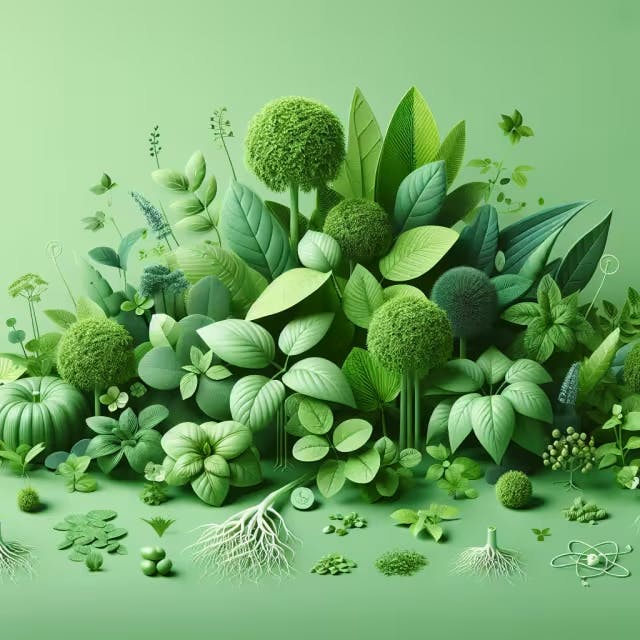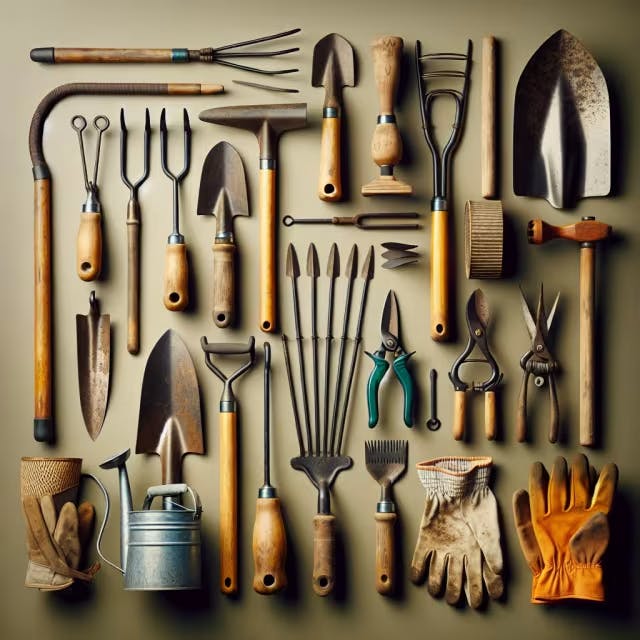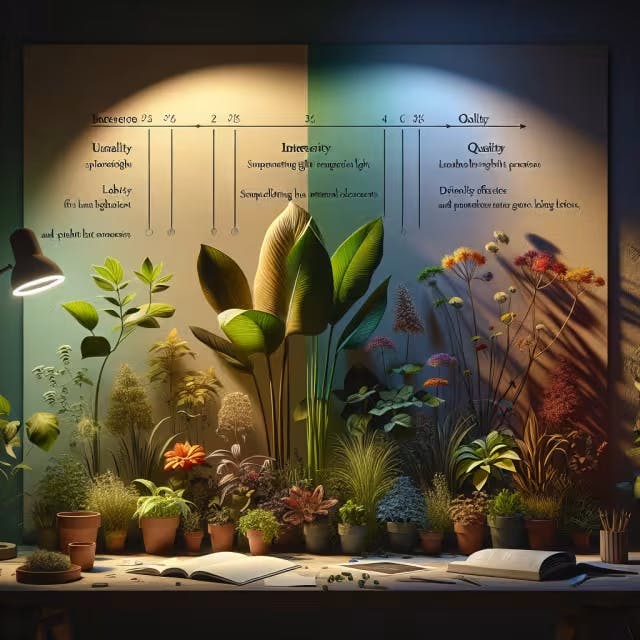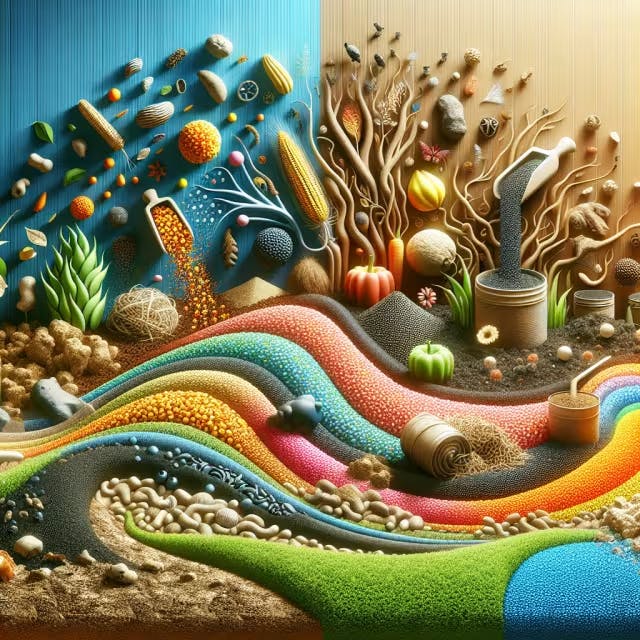Transform Your Black Thumb into a Green Thumb: Essential Tips
Go4Turf
February 11, 2024

Are you ready to turn your knack for wilting every plant you touch into a skill for nurturing a thriving garden? "Transform Your Black Thumb into a Green Thumb: Essential Tips" is your go-to guide for embarking on a fulfilling journey towards becoming a confident gardener. Drawing insights from Bethany Sy's passion for houseplants and her practical advice on watering, potting, and plant care, this article is designed to demystify the art of gardening, helping you understand your plants' needs and equip you with the right tools and knowledge to grow a lush, vibrant garden.
Key Takeaways
Understanding your plants' needs is crucial for transitioning from a black thumb to a green thumb.
Investing in the right gardening tools is essential for efficient and effective plant care.
Mastering the art of watering is key; knowing when and how much water your plants need prevents over or under-watering.
Proper lighting is critical for plant growth, and placing plants according to their light requirements promotes health and vitality.
Knowing how to use fertilizers and soil amendments can significantly enhance plant growth and soil quality.

Understanding Your Plants' Needs: The First Step to Going Green
Successfully cultivating healthy plants begins by recognizing their individual needs, a crucial step in mastering indoor or outdoor gardening. Different plants require varying amounts of sunlight, water, and nutrients, making it essential to understand these preferences to avoid common pitfalls. For example, succulents thrive in dry conditions and need minimal watering, whereas ferns prefer moist environments and regular misting.
Plant Needs at a Glance:
Sunlight: Research the optimal sunlight levels, as some plants demand full sun while others flourish in partial shade.
Watering: Overwatering leads to root rot, a common reason for plant demise. Learn the watering schedule that best suits each plant.
Soil: Use the right soil mix that provides the necessary nutrients and drains well.
Temperature and Humidity: Consider your home’s climate; tropical plants often require higher humidity levels than desert natives.
Adopting a tailored care approach based on these factors will significantly boost your success rate. Additionally, using tools such as moisture meters or apps can help monitor plant health and alert you to potential issues before they escalate. Remember, knowledge and observation are key in transforming from a novice to a proficient gardener.

Selecting the Right Tools for Every Gardening Task
Gardening success hinges on using the right tools. Whether you're a novice aiming to transform your black thumb into a green thumb or an experienced gardener looking to refine your craft, having a well-equipped toolkit is essential.
Spades and Shovels: For digging and turning soil. Opt for ones with a comfortable grip.
Pruning Shears: Essential for trimming and shaping plants.
Garden Forks: Great for breaking up compact soil.
Watering Can or Hose: Ensures your plants stay hydrated with a gentle shower.
Gloves: Protect your hands from thorns and dirt.
Choosing quality over quantity can save time and improve your gardening experience. Investing in durable, ergonomically designed tools can alleviate physical strain, allowing for longer, more enjoyable gardening sessions. Regular maintenance, such as cleaning and sharpening your tools, can extend their lifespan and efficiency. For in-depth advice on tool selection and maintenance, The Press Democrat and their gardening resources offer a wealth of information. Here, you can find articles, webinars, and online talks covering everything from composting to wildfire preparation, ensuring you're equipped not just with tools, but with knowledge too.

Mastering the Art of Watering: Neither Too Much Nor Too Little
One crucial aspect of plant care that often gets overlooked is the art of watering correctly. Understanding your plant's unique needs can significantly impact its health and growth. Here are some straightforward tips:
Check the soil moisture before watering. Stick your finger about an inch deep. If it feels dry, it's time to water.
Observe your plant's behavior. Drooping leaves can indicate both overwatering and underwatering.
Water deeply but infrequently to encourage strong root growth. This method prevents waterlogging while ensuring that the roots receive adequate moisture.
For more insights into balancing your passion for gardening with effective plant care strategies, this narrative by Shreya Dalela on personal growth and detachment offers analogous lessons on managing passion and expectations, which can be applied effectively in gardening endeavors. Find out more about managing passion and attachment.
Just like Frederick Douglass navigated through challenges with exceptional conviction, your gardening journey requires persistence, learning, and adaptation. You may encounter setbacks, but with the right knowledge and determination, transforming your black thumb into a green one is entirely within your reach. Read more about Frederick Douglass's journey and convictions.
Remember, every plant is different. Tailoring your care approach to each plant's specific needs will yield the best results.

The Importance of Proper Lighting in Plant Growth
Plants rely on light to perform photosynthesis, where they convert light, water, and carbon dioxide into oxygen and energy. This energy fuels their growth, supports blooming, and aids in seed production. Understanding and managing light exposure in your indoor garden can significantly impact plant health and vitality. Matching plants with their natural light requirements, whether they need low, medium, or high light conditions, is the first step toward nurturing a flourishing indoor garden. For areas with less natural light, supplementing with artificial lights such as LED or fluorescent bulbs can make a big difference. LED lights are particularly beneficial for their energy efficiency and longevity, while fluorescent lights are recommended for their broad spectrum of light, which closely mimics natural sunlight. To learn more about how lighting affects plant growth and how to choose the right plants for your lighting conditions, explore these resources from Texas A&M AgriLife Extension, University of Minnesota Extension, and University of Missouri Extension.

Navigating the World of Fertilizers and Soil Amendments
Choosing the right fertilizers and soil amendments can significantly affect your garden's health and productivity. Understanding these essentials gives plants the nutrients they need for vigorous growth.
Organic vs. Synthetic Fertilizers: Organic fertilizers release nutrients slowly, improving soil structure, whereas synthetic fertilizers provide rapid nutrient availability but with the potential for over-application and environmental harm.
N-P-K Ratios: This represents the percentages of Nitrogen (N), Phosphorus (P), and Potassium (K). Each plays a crucial role in plant health—Nitrogen for leaf growth, Phosphorus for root and flower development, and Potassium for overall health.
Soil pH: The acidity or alkalinity of the soil profoundly impacts nutrient availability. A pH test can guide the application of lime or sulfur to adjust the pH as needed.
Soil Amendments: Organic matter like compost or peat moss improves soil structure, aeration, and water retention. These amendments enrich the soil and support beneficial microbial life, enhancing root growth.
Selecting the right product often depends on specific plant requirements and soil conditions. Regularly testing soil health can fine-tune your approach, leading to a thriving garden. About choosing and applying fertilizers, the World Bank’s data offers insights into agricultural practices globally, suggesting the importance of sustainable fertilization methods for optimal plant growth and environmental health. Transforming your black thumb into a green thumb is achievable by merging scientific knowledge with consistent care and observation. By understanding the unique requirements of each plant, leveraging the appropriate tools and techniques, and maintaining the optimal soil, light, and water conditions, you can foster a vibrant garden. Remember, the journey from novice to expert gardener is a rewarding process of learning and growth, setting the foundation for a flourishing green space.
Frequently Asked Questions
How can I determine the right amount of sunlight for my plants?
To determine the right amount of sunlight for your plants, start by researching your specific plant species to understand whether they require full sun, partial shade, or full shade. Sun-loving plants often need direct sunlight for most of the day, while shade-tolerant plants can thrive with less intense light or indirect sunlight. Utilize tools such as moisture meters to monitor the effects of sunlight on your plant's water needs, adjusting placement within your home or garden to match the plant's natural habitat as closely as possible. Pay attention to signs of distress in your plants, such as yellowing leaves or wilting, which can indicate too much or too little light, and adjust their location accordingly to ensure optimal growth.
What are the signs of overwatering or underwatering, and how can I avoid them?
Signs of overwatering include wilting or yellowing leaves, a mushy base or stem, and fungus or mold on the soil surface, indicating root rot. Conversely, underwatering is characterized by dry, brittle, or browning leaves and stunted growth. To avoid these issues, it's crucial to:
Understand each plant's unique watering needs, as some plants like succulents require minimal water, while others like ferns thrive in moist conditions.
Use tools such as moisture meters to accurately gauge soil moisture levels before watering.
Adopt a tailored care approach, taking into account factors like the plant's natural habitat, soil type, and the climate in your home, to determine the most appropriate watering schedule.
By closely monitoring and adjusting your watering practices to match each plant's specific needs, you can prevent overwatering and underwatering, ensuring your plants remain healthy and vibrant.
Which gardening tools are essential for a beginner to start transforming their black thumb into a green thumb?
To kickstart your gardening journey and nurture a green thumb, beginners should consider these essential tools:
Spades and Shovels: Ideal for soil turning and preparation, ensuring you can plant with ease.
Pruning Shears: Necessary for keeping plants healthy and well-shaped by trimming away dead or overgrown branches.
Garden Forks: These are excellent for aerating the soil, which is crucial for healthy root development.
Watering Can or Hose: A must-have for consistent plant hydration; opting for a tool with a gentle shower setting is beneficial to avoid soil erosion or plant damage.
Gloves: Gardening gloves protect your hands from injuries and keep them clean throughout your gardening activities.
Remember, quality tools can significantly enhance your gardening experience by making tasks easier and more enjoyable. Proper tool maintenance, including regular cleaning and sharpening, extends the life of these essential items, ensuring they're ready whenever you are.
How does the choice between organic and synthetic fertilizers affect my garden's health?
The choice between organic and synthetic fertilizers plays a significant role in your garden's health by affecting soil structure and nutrient availability. Organic fertilizers enrich the soil with natural materials, releasing nutrients slowly, thereby improving soil health over time without the risk of nutrient leaching or groundwater contamination. In contrast, synthetic fertilizers offer nutrients quickly, which can lead to rapid plant growth but may pose risks of over-application and environmental damage. This choice also impacts the soil's microbial ecosystem; organic amendments support a vibrant microbial life, beneficial for plant health and soil structure. Consideration of your garden plants' specific needs, along with regular soil health assessments, can guide you in selecting the most appropriate fertilizer type, ultimately influencing your garden's productivity and sustainability.
Why is soil pH important, and how can I adjust it for better plant growth?
Soil pH is crucial because it affects the availability of nutrients to plants, influencing their health and growth. Different plants require specific pH levels to thrive—some prefer acidic soil, while others grow better in alkaline conditions. To adjust soil pH, use lime to raise the pH (make it more alkaline) or sulfur to lower the pH (make it more acidic), based on the results of a soil pH test. Regular monitoring and adjusting of soil pH, in alignment with each plant's needs, can significantly improve plant growth and vitality.
How can I use artificial lighting to improve the health of my indoor plants?
To improve the health of your indoor plants using artificial lighting, first understand their natural light requirements—whether they need low, medium, or high light. For areas with insufficient natural light, supplement with artificial lights like LED or fluorescent bulbs. LED lights are energy-efficient and long-lasting, ideal for most indoor plants, while fluorescent lights offer a broad spectrum of light that closely mimics natural sunlight, beneficial for plants needing more intense light exposure. Adjust the duration of light exposure to mimic natural day cycles, promoting healthier growth.